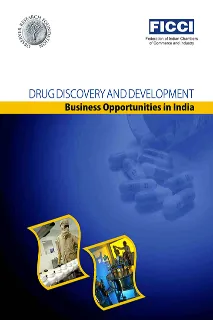Global transformation of the pharmaceutical industry has given rise to new business opportunities in drug discovery for India. India has become a preferred location for clinical trials. In the last few years there has been a growth in the number of pre-clinical research collaborations as well. Indian companies have transitioned effectively from providing a “cost and speed” based value proposition in the clinical trials part of the enterprise, and R&D support services to the drug discovery enterprise, into more value added areas. From fee for service models, firms have gone into risk sharing and partnerships. From licensing molecules developed in India at early stages they have gone into later stage licensing and are even looking into providing end-to-end solutions.
There are many stakeholders in the drug discovery and development industry such as the regulatory bodies, public research institutes, universities, hospitals, small biotech companies, specialized R&D firms, domestic pharmaceutical companies, the multinational firms, CROs, the doctors, the patients, NGOs and the media. Each stakeholder represents different interests and priorities. However, through it all they have some common objectives: they want the patients to lead better and fuller lives because of their innovations; they want the firms to make reasonable profits so that they can survive and continue to invest in innovations; and they want the government to set the right tone for the industry, act as a watchdog and protect public interest while providing the right incentives and partnering with the stakeholders in the industry.
This is a report of a workshop where multiple stakeholders discussed the issues underlying the drug discovery and development industry with a common goal of making it grow in an ethical way. The participants recognize the possibility that India can become a major player in the global drug discovery and development enterprise. In particular Indian firms could position themselves as “leaders” in the emerging bio-similar (follow-on biologics) market where India’s expertise in innovations and in generics could be combined.
There is however, also the recognition of a number of constraints in achieving such a goal. The main constraint lies in a lack of resources. Sources of high risk funding are not easily accessible in India. Skills and trained personnel are also in short supply. Assets such as specialized equipment are, unavailable, inaccessible or underutilized and poorly maintained. Indian firms do not have a long history of being innovative in this industry and have not as yet been able to show results. Parts of the industry and the regulatory system are also seen to be working at odds with each other due to historical habits which need changing. There is limited cooperation between the public sphere and the private sphere.
The solution could lie in removing the irrationalities in the system and then leveraging limited skills and assets to generate higher efficiencies from synergies brought about through collaborations and partnerships. This needs to be complemented by generating a national inventory of skills and assets to assess shortfalls, and creating a multi-stakeholder governance system to optimally allocate resources to fill those gaps. The creation of a networked organization (consortiums, clusters etc.) with the appropriate culture of sharing may be the best course of action. New and innovative funding models, which could include the government acting as a private equity investor as an option, is necessary to implement the grand strategy.
The presence of a strong vision for the drug discovery and development industry is deemed as essential in moving the solution along.
Vision, governance and operations can go far but “incentives” are essential to create successful partnerships and the culture of genuine sharing. Some incentives such as sharing of intellectual property are already in place but more tax incentives for companies and monetary incentives for individuals need to be put into place.
The government’s proactive attitude in trying to energize this industry has been helpful and industry needs to put together a process and a structure that will facilitate a genuine public private partnership despite the sometimes, different objectives of its various stakeholders.
While finer distinctions exist, three broad types of activities may be discerned in the drug discovery and development enterprise-the pre-clinical (from lead generation and optimization to animal toxicological studies), the different stages of clinical trials (from proof of concept and Phase 1 to post market phase 4) and those related to regulatory and intellectual property concerns.
This report addresses some of the key issues in each. A summary of recommendations made in the following six areas in this report, is given below. The vision needs to be articulated by the government in collaboration with key stakeholders to provide the big picture and guide the development of capabilities towards national objectives. Resources need to be generated in innovative ways in order to be able to implement the mission. Creating clusters and networks is necessary to provide a system and structure for sharing and generating synergies in order to get the most returns from investments. Preclinical phase of the drug discovery process has its own needs and specific recommendations relevant to that stage as also the clinical trial stage are identified. Finally, a number of regulatory changes may be needed and are also summarized.

 PDF Download
PDF Download



 PREV
PREV

